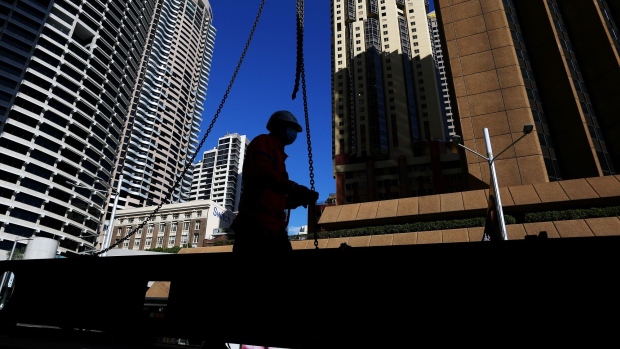Mar 29, 2023
Investors Bet Australia Can Manage Soft Landing With High Rates
, Bloomberg News

(Bloomberg) -- Investors are betting one major central bank will successfully navigate the policy tightening required to cool inflation without sending its economy into reverse: the Reserve Bank of Australia.
Yields on long-dated Australian government bonds are about 40 basis points higher than their short-dated counterparts, a traditional indication of a healthy economy. By contrast, yield curves are inverted in Germany, the US and nearby New Zealand as traders bet interest-rate hikes will trigger recessions.
“The RBA cares about inflation but also they aim at keeping the economy on an ‘even keel’,” said Giulia Specchia, a macro strategist at UBS Group AG.
“This means that they are more likely to achieve a soft landing relative to those other economies where central banks are laser-focused on achieving the inflation target at whatever cost.”
The RBA’s board holds its April policy meeting on Tuesday and money markets are pricing no further increases in the 3.6% cash rate. Economists generally expect one more 25 basis-point hike.
It’s a tacit endorsement of RBA Governor Philip Lowe’s policy moves as he awaits the outcome of the central bank’s first review in a generation. The report’s findings are likely to be a key factor in whether Lowe receives an extension to his seven-year term at the helm that ends in September.
The market’s assessment comes even as investors have been highly critical of the way the RBA communicated after it abruptly scrapped yield-curve-control in 2021. Lowe then held onto dovish policy guidance for too long before embarking last year on a tightening cycle.
A key factor behind the RBA’s more moderate stance is the level and composition of Australia’s household debt. Most home loans are on variable rates, ensuring policy adjustments are transmitted to repayments much faster than the US where they’re predominantly on fixed rates.
Lowe is also aware of the scale of leverage in his economy. Debt as a proportion of income is 187.8%, among the highest in the developed world.
“Monetary policy has a stronger impact in Australia,” UBS’s Specchia said. “In turn, this explains why the RBA has been more cautious in the hiking cycle.”
The approach appears to be working, with inflation easing in each of the first two months of this year, supporting the RBA’s view that consumer-price growth peaked late last year. Its 10 consecutive rate hikes have also begun to see consumer spending level out, giving policymakers scope to stand pat.
Still, economists have been gradually lifting their estimates of recession risk in Australia to 40% this month. That remains below the 60% in Germany and two-in-three chance seen in the US and 70% in New Zealand, according to surveys by Bloomberg.
That said, Australia’s yield curve may not be the best recession signal given that prior to the Covid-19 pandemic, it avoided two straight quarters of economic contraction for 28-1/2 years. A key driver of the prolonged expansion was population growth, which masked many of the same weaknesses that afflicted other economies.
“It is much harder to have a recession in the traditional sense when the population is expanding at nearly a 2% annual rate,” said Alex Joiner, chief economist at IFM Investors Ltd, which manages about A$211 billion ($141 billion) in assets.
“We do very much risk a per capita recession and also a rise in the unemployment rate more than currently expected as labor supply is so strong.”
--With assistance from Garfield Reynolds.
©2023 Bloomberg L.P.






